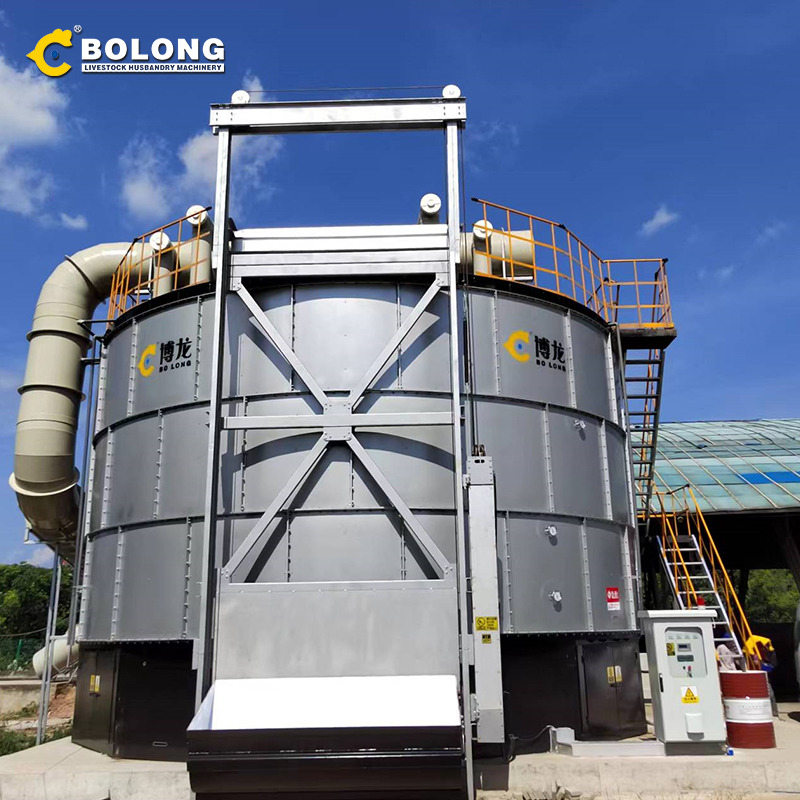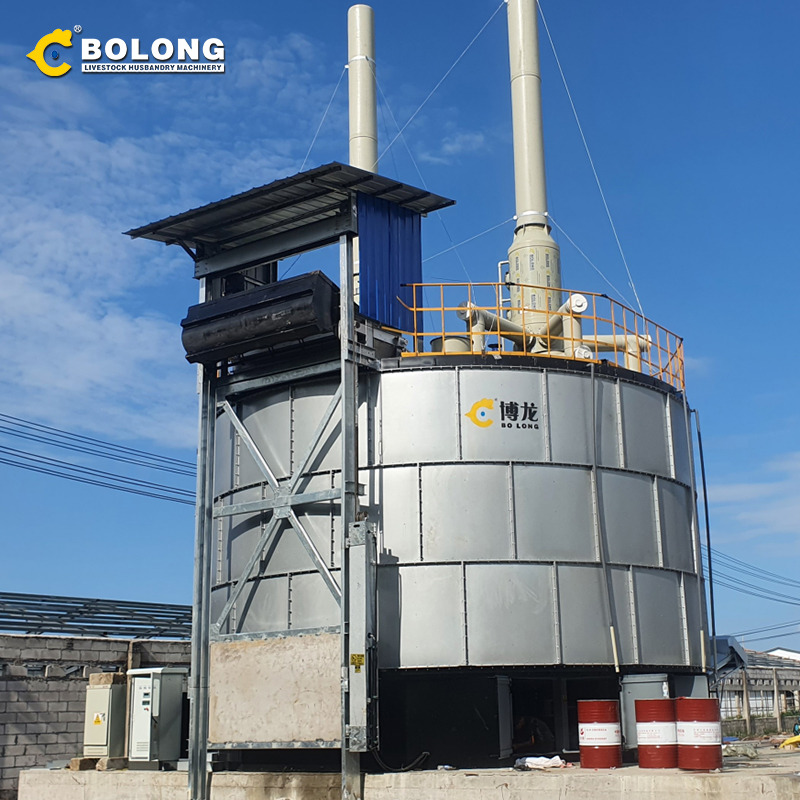With the advancement of global agricultural modernization, the demand for agricultural waste treatment is growing. The traditional decentralized treatment mode has problems such as low efficiency, high cost, and environmental pollution. The centralized treatment mode of regional organic fertilizer composting machines has become an important solution to the problem of agricultural waste treatment by virtue of its advantages of scale, intensiveness, and standardization. This model provides an innovative path for sustainable agricultural development by optimizing resource allocation, improving production efficiency, and reducing environmental pollution. This paper will discuss the needs of agricultural waste treatment, the advantages of centralized mode, the large-scale design of composting machines, successful cases, etc., to provide reference for countries to promote green agriculture.
In the agricultural production process around the world, a large amount of waste such as livestock and poultry manure, straw, and food processing residues are generated every year. If these wastes are not used reasonably, it will lead to environmental problems such as water pollution and soil degradation. With its efficient biodegradability, organic fertilizer composting machines can convert these wastes into high-quality organic fertilizers and realize the recycling of resources. However, due to the limited technology and funds of many small farms or individual farmers, it is difficult to give full play to the role of composting machines. Therefore, the implementation of regionalized centralized treatment mode, relying on large-scale organic fertilizer composting machines, and improving the treatment efficiency of agricultural waste has become an important trend for the sustainable development of global agriculture.

Under the traditional decentralized treatment mode, each farmer or small farm uses an organic fertilizer composting machine alone, resulting in low equipment utilization and high unit treatment costs. After adopting the regionalized centralized treatment mode, large-scale composting machines can achieve batch production, improve resource utilization, and reduce unit costs. At the same time, centralized procurement of organic raw materials and unified management of equipment can further reduce operating expenses and improve economic benefits.
The decentralized treatment mode often lacks professional technical support, resulting in unstable operation of the composting machine and affecting the quality of organic fertilizer. Under the regionalized centralized treatment mode, all organic fertilizer composting machines are maintained and managed by a professional team to ensure that fermentation conditions such as temperature, humidity, and oxygen supply are always in the best state. In addition, centralized management can also track the operation of the composting machine in real time through the automated monitoring system, improve the stability and safety of production, and ensure that the quality of organic fertilizer meets agricultural ecological standards.
Due to the scattered distribution of agricultural waste, how to efficiently collect and transport it to the regional composting machine treatment center is the key to the successful implementation of this model. Reasonable design of the transportation system, establishment of multiple transfer stations, and use of closed special transport vehicles can reduce the loss of waste during transportation and reduce transportation costs. In addition, the introduction of intelligent logistics systems can optimize transportation routes and ensure that the processing capacity of organic fertilizer composting machines is fully utilized.
The site selection of regionalized organic fertilizer composting machine treatment centers needs to comprehensively consider factors such as land resources, environmental protection standards and policy support. Generally, composting machines should be set up in areas far away from residential areas but with convenient transportation to reduce the impact on the surrounding environment. At the same time, the construction of composting machines should strictly implement environmental protection standards, be equipped with waste gas treatment equipment, sewage treatment systems, etc., to ensure harmless emissions and meet the requirements of international green agricultural development.

In many countries and regions, the regionalized organic fertilizer composting machine centralized treatment model has achieved remarkable results. For example, in some agriculturally developed countries in Europe, the government has promoted the construction of regionalized composting machine treatment centers, and achieved efficient conversion of livestock and poultry manure and straw through intelligent management systems. The utilization rate of organic fertilizer in these regions has been greatly improved, while reducing the use of chemical fertilizers and improving the soil ecological environment.
In some agricultural cooperatives in North America, more than 80% of agricultural waste is converted into renewable resources each year through the regionalized composting machine model, which improves the operating efficiency of the agricultural circular economy. In addition, in some developing countries, the promotion of regionalized organic fertilizer composting machines not only reduces agricultural pollution, but also improves the quality of local agricultural products, making green organic food a new growth point in the market.
The regionalized organic fertilizer composting machine centralized treatment model is not only an agricultural waste treatment solution, but also an important means to promote global agricultural modernization. By establishing a regional cooperation mechanism, we can give full play to the synergy of “government + enterprise + farmers” and build an efficient agricultural circular economy system.
Governments can support the promotion and application of composting machines through policy guidance, financial subsidies and technology promotion. For example, special funds subsidies can be provided to reduce the cost of farmers and enterprises investing in composting machines, and encourage the establishment of regional centralized processing centers.
As the main body of organic fertilizer production, enterprises can use advanced composting machine equipment and modern management models to improve the production efficiency and quality of organic fertilizers. At the same time, enterprises can expand the sales channels of organic fertilizers and increase product added value through market-oriented operations, providing a strong impetus for the sustainable development of agriculture.
While enjoying low-cost, high-quality organic fertilizers, farmers can also reduce their dependence on chemical fertilizers and improve the quality and market competitiveness of agricultural products. In addition, farmers can also increase their income and achieve a win-win situation for ecology and economy by participating in the production of organic fertilizers.

The regionalized organic fertilizer composting machine centralized treatment model is an important way to solve the problem of agricultural waste treatment. This model improves the utilization rate of agricultural waste, reduces production costs, reduces environmental pollution, and helps the process of agricultural modernization through large-scale fermentation, centralized management, optimized transportation system and regional cooperation. In the future, as governments around the world strengthen their policy support for sustainable agricultural development and composting machine technology continues to upgrade, the regionalized organic fertilizer composting machine centralized processing model will be more widely promoted globally, providing a solid guarantee for the green development of agriculture.